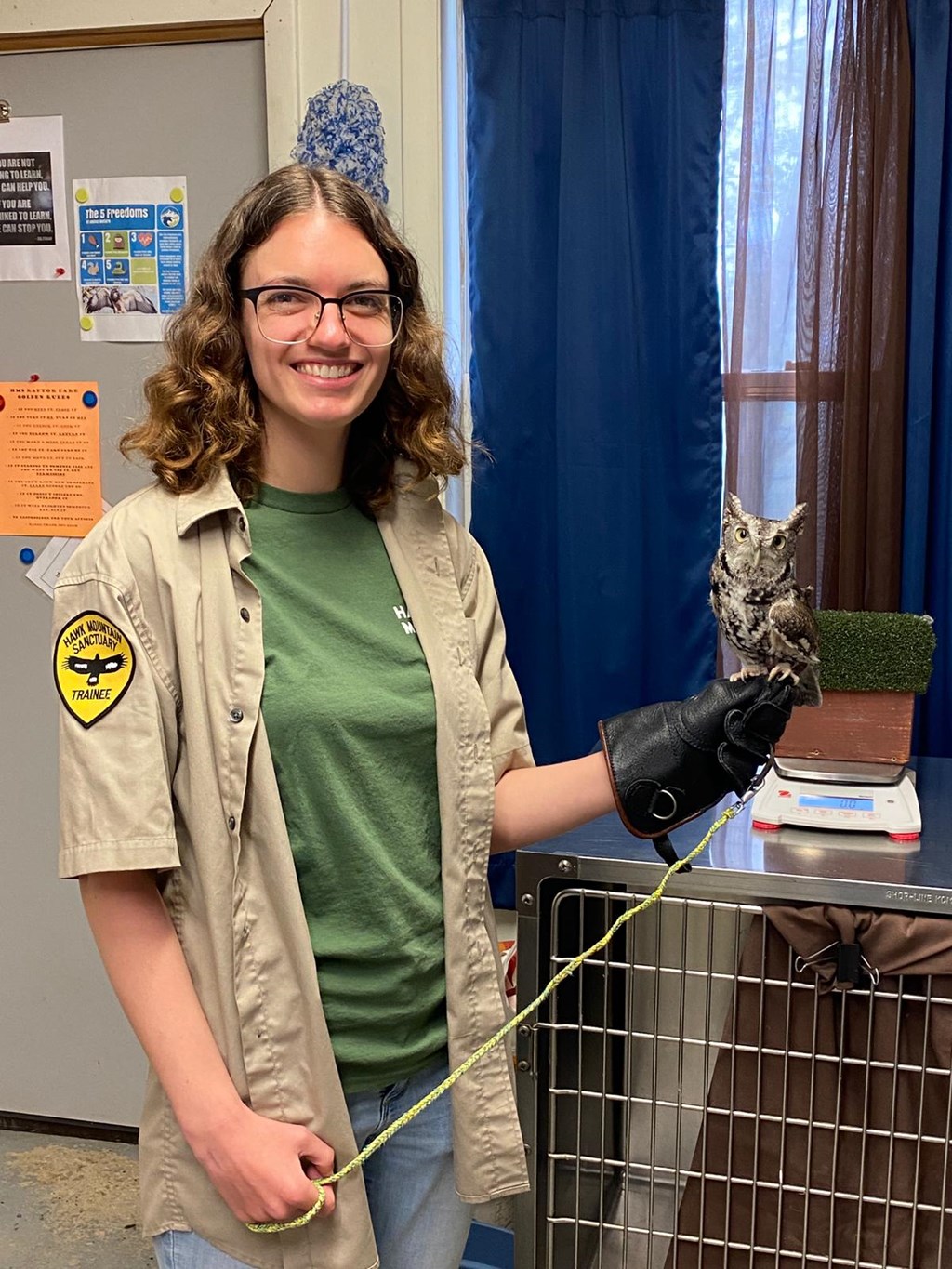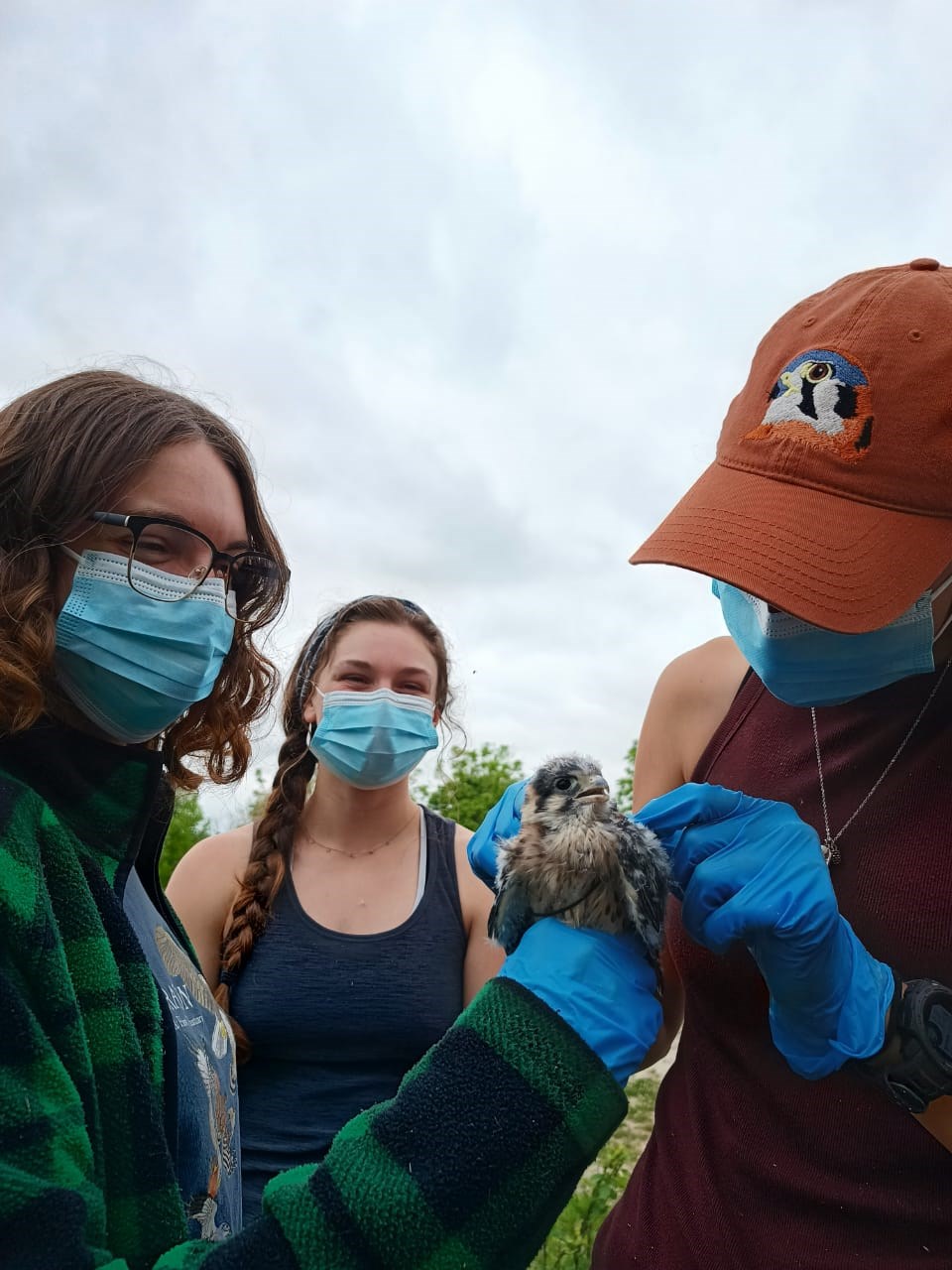Springing into a Conservation Career
Posted on in On the Mountain by Catherine Boyle, Spring 2022 Conservation Trainee

Spring. The season of new life, new beginnings, and new opportunities. After hovering around Hawk Mountain for a year or so, with no sense of where I was headed, this was just what I needed. My name is Catherine Boyle, or Cat, as I go by these days. I grew up with Hawk Mountain a short drive away and a family fascinated by animals and nature, so I’ve always been drawn toward activities revolving around wildlife, be it hiking and birding, volunteering at a wildlife rehab, interning at a zoo, or taking an incredible trip to Costa Rica to help capture and band ruby-throated hummingbirds. But since I graduated in 2020 with a bachelor’s in wildlife biology, I had hit a bit of a standstill. While I was lucky enough to get a job in Hawk Mountain’s visitor center, I knew it was only a temporary position while I got my bearings. The only problem was, I didn’t know what was next for me. I didn’t feel ready for grad school, but I also didn’t have enough experience for any full-time job in my field, and the opportunities for field experience were all across the country, far from home, and a little outside my comfort zone. Fortunately for me, Hawk Mountain had my back.
Since I started this spring traineeship, working as both a science and education trainee, I’ve had a chance to dabble in the numerous directions I could take my career. On the education side, I’ve captured the interest of numerous school groups and enthusiastic visitors during guided hikes and programs. I’ve reignited my creativity through brainstorming activities and crafts for summer camps. Most memorable of all, I’ve handled our ambassador raptors in front of captivated crowds, even while speaking to an audience of over 100 people!
One of my most cherished memories comes from my very first Raptors Up Close program. I had been preparing for about two weeks, running through scripts and learning to safely handle our two smallest raptors, the eastern screech owl and American kestrel. There were lots of details to remember: the three locks to hold their leads securely; the angle of my arm, bent outward at the elbow to give the audience the best view; the particular way to turn, pivoting rather than swinging, so as not to throw the bird off balance; and then the facts! So many facts I had to reel to the surface of my mind, one after another, while actively speaking, “owls’ ears are asymmetrical, which makes them masters at triangulation. The screech owls’ ear tufts, or plumicorns, are mainly used for camouflage,” and “kestrels are sexually dimorphic, meaning that the males and females look different.”
Naturally, I felt overwhelmed, and more than a little intimidated. Though a calmness had washed over my body the day of my first program, masking my nerves. My mind was still uncertain. What if I blanked on everything I had committed to memory, forced to stammer and apologize while frantically fumbling for any fact I could remember?
As soon as I started the program, though, I realized I’d been fretting over nothing. The words flowed to the front of my mind, the script imprinted behind my eyes. The countless times I had practiced on my own had paid off, and the screech owl on my glove was full of cues, too — just looking at him reminded me of half the material I was covering. By the end, I felt confident and accomplished. My public speaking skills had grown immensely from what I’d remembered them being — and so has my love for engaging with the public about all things nature-related.

The science side of my traineeship, too, has treated me to a number of experiences. Conducting the spring migration count familiarized me with our raptors and honed my identification skills. I’ve assisted with numerous field research projects — finding broad-winged hawk nests, checking kestrel nest boxes, banding eastern screech owl chicks, and conducting a songbird census.
Spring is the season of new life, and in the case of my primary project, that means two things: breeding songbirds and sprouting invasives. I’m one of the only people working on this project, and it’s going to put my birding-by-ear skills to the test. My job is to conduct point counts through birdsong to determine if the presence of invasive plants has an impact on the number of nesting birds, specifically the ovenbird and black-and-white warbler. These species were chosen because they are both common habitants during breeding season. They are also both ground nesters, which means that invasive plants like Japanese stilt grass could affect where they are able to build a suitable nest.
I have to rise with the birds for this study, arriving at the first point within 30 minutes of sunrise. Navigating the forest in the dark while filling out a data sheet is no easy task, especially when my brain is still craving some extra sleep. My love for birding fuels me though, and at least I only have two songs to pick out – the ovenbird’s increasingly aggressive “teacher, teacher, teacher, TEACHER,” and the black-and-white warbler’s squeaky bicycle wheel whistle.
As I dive into this research and the traineeship slowly comes to a close, I will undoubtedly leave with more knowledge, invaluable experience, and most importantly, an idea of where my future will lead. Spring may be ending, but my life is still blossoming with opportunities. Recently, I was offered a position at Osprey Wilds Environmental Learning Center in Minnesota, where I will join their environmental education team, further developing my independence as an educator and gaining more experience with outdoor activities and animal husbandry. After that, I want to keep working with children and the public, connecting curious minds to nature and inspiring people of all ages and cultures to do their part in the protection of our planet. Only time will tell where my future leads, but I will always be thankful to Hawk Mountain for sowing the seeds to my new beginning.